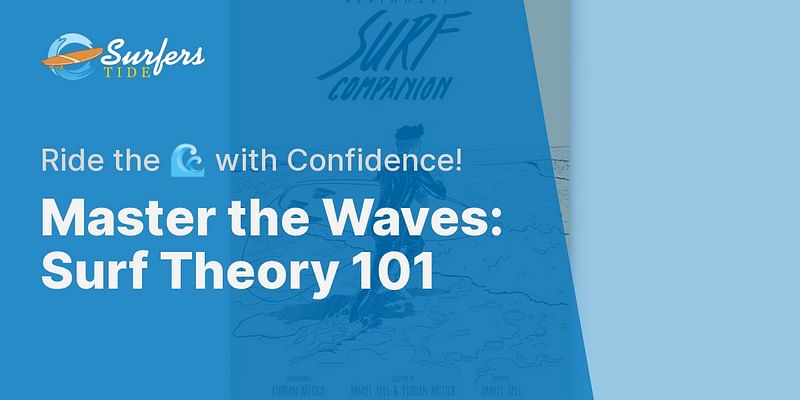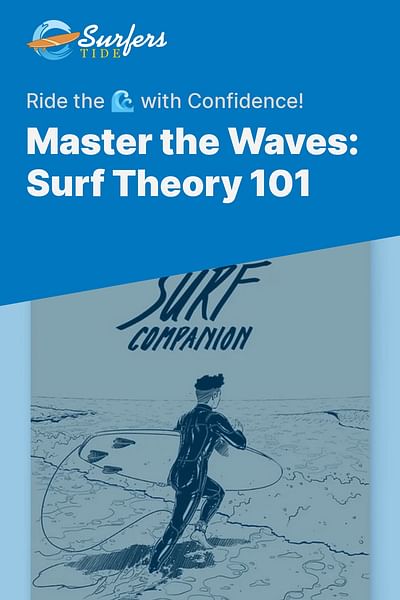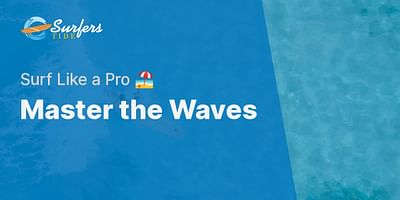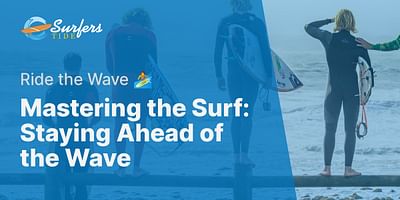Malia Koa is a professional longboarder, surf photographer, and travel enthusiast. Born in Hawaii and raised in a family of surfers, Malia has a deep connection to the ocean and the surfing community. She loves capturing the beauty of the sport through her lens and inspiring others to embrace the surfer lifestyle.
Hey there, fellow wave rider! I'm stoked to help you dive into the world of surf theory. Understanding the principles behind surfing can truly elevate your skills and take your wave-catching game to the next level. So, let's paddle out and explore the fascinating world of surf theory together!
Surf theory is all about understanding the mechanics of waves, how they form, and how they interact with the ocean floor. By grasping these concepts, you'll be able to read the waves, position yourself correctly, and make the most of every ride. So, let's start with the basics.
First things first, waves are created by the wind blowing across the ocean's surface. As the wind moves, it generates energy that transfers to the water, creating those beautiful swells we love to ride. The size, shape, and power of a wave depend on factors like wind speed, duration, and the distance it travels.
Now, let's talk about the anatomy of a wave. A wave has three main parts: the face, the lip, and the shoulder. The face is the sloping part of the wave that surfers ride, while the lip is the top part that eventually breaks and crashes. The shoulder is the section of the wave that's yet to break, offering a longer ride.
Understanding wave breaks is crucial in surf theory. Waves can break in different ways, depending on the shape of the ocean floor. The most common types of breaks are beach breaks, reef breaks, and point breaks. Beach breaks occur when waves break over a sandy bottom, while reef breaks happen over coral or rocky reefs. Point breaks occur when waves wrap around a headland or point, creating long, peeling waves.
When it comes to positioning yourself in the lineup, it's essential to understand the concept of "peak" and "inside" waves. The peak is the highest point of a breaking wave, and it's where the wave starts to break first. The inside wave is the wave that breaks closer to the shore. By observing the lineup and understanding wave patterns, you can position yourself strategically to catch the best waves.
Now, let's talk about the different types of surfboards and how they affect your surfing. Longboards, shortboards, fish boards, and funboards all have unique characteristics that influence your performance in the water. Longboards, for example, offer stability and are great for beginners, while shortboards are more maneuverable and suited for advanced riders. Choosing the right board for your skill level and the conditions you're surfing in is crucial.
Lastly, let's touch on surf etiquette. Respecting other surfers in the lineup is an essential part of surf theory. Always be aware of your surroundings, take turns, and give right of way to the surfer closest to the peak. Being a good member of the surfing community will not only make your sessions more enjoyable but also earn you respect from fellow surfers.
So, there you have it, a glimpse into the world of surf theory. By understanding the mechanics of waves, wave breaks, positioning, board selection, and surf etiquette, you'll be well-equipped to take on any lineup with confidence. Remember, practice makes perfect, so get out there, catch some waves, and embrace the stoke of surfing!















